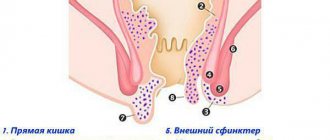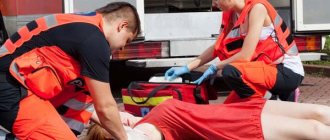- How does decompression sickness occur?
- Consequences of decompression sickness
- Severity of decompression sickness
- Chronic decompression sickness
- Symptoms of divers' disease
- Complications of DCS
- Diagnostics
- Treatment
Caisson disease is a pathological condition in which gas bubbles form in the vessels and tissues of the body.
This occurs due to the rapid decrease in atmospheric pressure. Otherwise, the disease is called decompression sickness (DCS). The name "caisson" comes from the word "caisson". This device was invented in the 19th century for underwater work. The design was a chamber in which a person descended under water. At first, decompression sickness was diagnosed by underwater specialists. Over time, its distribution became wider. Sometimes this condition occurs in pilots who, when changing their flight altitude, are exposed to changes in atmospheric pressure. However, divers are most susceptible to this disease. Fans of scuba diving cannot always cope with the transition from high pressure to normal, which is why they develop “diver’s disease.” According to statistics, up to 4 cases of decompression sickness are recorded per 10 thousand dives. It can be not only acute, but also chronic.
To prevent the disease, you should use high-quality breathing mixtures when diving, avoid a sharp rise from the depths to the surface, observe intervals between dives or flights, and undergo preventive examinations if a person is working underwater.
How does decompression sickness occur?
The main reason for the formation of air bubbles in organs and tissues is a sharp decrease in atmospheric pressure when rising to a height or the surface of the water after a dive. However, there are factors that increase the risk of developing “diver’s disease”:
- Age-related changes. With age, it becomes more difficult for the heart and lungs to cope with stress, so decompression sickness is more common in middle-aged and mature people than in young people.
- Hypothermia. Cold impairs blood supply to organs and tissues. This is especially true for peripheral vessels. Because of this, the pulmonary vessels receive less blood, which leads to gas retention and the formation of bubbles.
- Increased blood viscosity. This condition occurs when dehydration occurs. Blood flow slows down, and blood stagnation occurs in peripheral vessels.
- Intoxication. Drinking alcohol before diving is life-threatening. Alcohol provokes dehydration, and when there is alcohol in the blood, air bubbles become larger and can clog the lumen of the vessel.
- Overweight. If the body contains a high percentage of adipose tissue, bubbles form faster due to the hydrophobicity of the fat. In addition, fats tend to dissolve inert gases from the breathing mixtures used by divers.
- Increased carbon dioxide concentration. This condition is called hypercapnia. It occurs when using poor quality mixtures or when breathing improperly under water. As CO2 concentration increases, more inert gases dissolve in the blood.
- Exercise stress. During exercise, blood flow becomes uneven. Gases in the blood dissolve more intensely and air bubbles appear. As a rule, they are very small in size and localized in the joint area. On subsequent dives, decompression sickness may become more severe.
Forecast
The prognosis for decompression sickness can be very difficult if a person is moved from conditions of high atmospheric pressure to conditions of normal or reduced pressure - even death can occur.
Thanks to preventive measures, death rarely occurs - only due to concomitant disorders, due to which compensation mechanisms have not been activated during a sharp change in atmospheric pressure.
Kovtonyuk Oksana Vladimirovna, medical observer, surgeon, consultant doctor
just today
( 55 votes, average: 4.07 out of 5)
An increase in eosinophils in the blood of an adult: what does this mean?
Related Posts
Consequences of decompression sickness
When immersed in water, atmospheric pressure increases. Because of this, the gases of the respiratory mixtures dissolve in the blood of the capillaries of the lung tissues. After ascent, when the pressure returns to normal limits, the opposite phenomenon occurs. Gases dissolved in the blood form bubbles. If a diver ascends quickly, that is, the body does not have time to adapt. If the rate of ascent is not observed, the blood seems to “boil.” At this moment, not only small but also large bubbles are formed. They attract platelets to themselves, increasing in size. These compounds can cause thromboembolism - blockage of the lumen of the vessel.
When a large number of such bubbles with platelets appear in the blood, a gas embolism develops. Circulating through the bloodstream, these compounds can damage the walls of blood vessels, causing hemorrhage.
In addition to blood vessels, bubbles can be found in joint cavities and soft tissues. Gas compounds compress nerve endings, causing pain throughout the body. Foci of necrosis may also occur in the muscles and internal organs, which is also caused by compression.
Dangers of freediving
Diving to great depths without scuba gear has its own specifics. It usually lasts no more than 7-10 minutes (12 minutes is the maximum recorded breath-holding time). Nevertheless, this turns out to be enough for the blood to be saturated with excess nitrogen: the enormous pressure at depth compresses the chest, so that the volume of the lungs decreases several times, and the density of the air collected in them when inhaling before diving increases proportionally.
On average, the volume of human lungs ranges from 4 to 6 liters. The lungs of a “large-sized” trained diver can hold up to 10 liters of air.
Let's take the “compromise” option - 7.5 liters. When diving without scuba gear to 40 meters, their volume will decrease to one and a half liters, and the air density in them will increase 5 times. At a depth of 120 meters, their volume will be less than 600 milliliters, and the air pressure in them will increase to 12.5 atmospheres.
Thus, nitrogen narcosis and partly decompression sickness threaten not only scuba divers, but also freedivers who hold their breath (albeit to a much lesser extent, since the air in their lungs is not replenished throughout the dive).
However, in addition to this, people involved in freediving face additional dangers:
Chest compression
1. Chest compression. When diving to great depths, the volume of the lungs under water pressure can decrease so much that the freediver will be seriously injured - even death.
In medical sources, the average theoretical diving limit without scuba gear is indicated as 30-50 meters. The individual theoretical diving limit is calculated based on lung volume and, as a rule, with the most favorable indicators does not exceed 120 meters.
Naturally, triumphant practice sometimes crushes boring theory. But there are only a few people who have broken the theory, whose names are familiar to all freedivers. But there are many, many hundreds of unknown divers who, by their death, confirmed the reliability of the theory. So think about whether you need to go for a record










